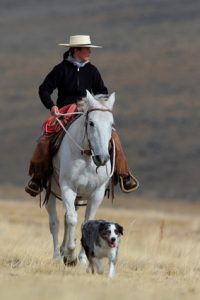I’m excited to welcome author Tori L. Ridgewood to Ancient Children. Tori, please tell our readers a little about yourself.
I am in my mid-thirties, tall, and I can never make up my mind on what colour I want my hair to be! Married since 1997, I have two school-aged children and I am a full-time secondary school teacher. I get completely tongue-tied around anyone remotely famous, met my husband at a Star Trek club (that he started to meet girls), and I have three tattoos. I also write under a pen name — I find it helps me to tap into my creative side, helps a little with separating my writing life from my professional life, and it’s just a lot of fun.
That’s a great story about meeting your husband. Guess his plan worked. Tell us about your book.
Wind and Shadow: Book One of the Talbot Trilogy is a paranormal romance with elements of horror. A good witch must do battle with a malevolent vampire, and she must convince a skeptical police officer in order to help her. It’s my love letter to things supernatural: witches and witchcraft, vampires and magick.
 What was your inspiration in writing Wind and Shadow?
What was your inspiration in writing Wind and Shadow?
There was an incident in the former mining town of Cobalt, Ontario, about twenty-five years ago. A sinkhole opened up in the middle of a street, a gap big enough to swallow a car, and it happened because the miners of the early 20th century had tunneled everywhere under the community. The timbers holding up the tunnels were starting to rot, so there was a big push to have the mines reinforced. When I was ten, I lived near Cobalt, and I remembered that some enterprising individuals advertised the event as the world’s largest pothole! About seven years ago, while I was on parental leave with my baby daughter, I started thinking about that giant pothole, and what else might have caused the street to collapse. What if it was some kind of imprisoned creature working itself free? What creature is most likely to be lurking underground to begin with? Add that to my love of vampires, and of witches, and I began to build the story.
The cover of your book is very eye-catching. Tell us about the cover design. I’m also wondering how the book came to be titled.
The cover was designed by the lovely Caroline Andrus, and it represents the protagonist, Rayvin Woods. She’s a natural witch with great power, but she can’t always control her power as well as she’d like. The pentacle refers to a charm that Rayvin wears, an inherited piece from her mother and grandmother. It helps her to focus her energies when casting spells.
I had a difficult time finding an effective title for this book. During a period of writers’ block, I wrote a prequel novella for the Talbot Trilogy called “Mist and Midnight”, which explains how the vampire became imprisoned in the first place. I wanted the first full novel of the trilogy to have the same type of title, something three words that referenced natural elements. Earth, air, fire, water, and spirit are significant parts of magick in the novel, as well as the passage of time, so I wanted a title that would help to reflect those aspects.
I also needed something that would reflect the autumn setting, and that would lend itself to a continued pattern of three words in the second and third books of the trilogy. A former student of mine, also a writer, suggested using a formula that involved counting up to a certain number of words in the beginning of the first three chapters. The formula brought me to the words “wind” and “shadow”. It just felt right. Rayvin encounters gusts of wind at fortuitous moments, almost as though nature or another force is trying to warn her. “Wind” also represents her choice to run away from her problems when she was a younger woman, and how she is trying to change her life to make it better. (I do love “Winds of Change” by The Scorpions!) And then, “Shadow” represents not only the darker parts of her life that are making her unhappy, and the coming of winter, but also the evil nature of the vampire stalking her. I love the way the title just seemed to fall into place and belong to the story.
I love the name of your main character. Give us an insight into her.
Rayvin Woods is petite, curvy, redhaired, and tough. She lost her mother at a young age, and never knew her father, but she grew up in her best friend Andrea’s household. She’s a natural witch, in the sense that she manifests psychic and telekinetic abilities and can cast spells very effectively, although not always with a lot of control. Sometimes, Rayvin will work some magick that follows its own path, providing a result that she wants but not necessarily in the way she meant it to, kind of like Schmendrick in The Last Unicorn.
Rayvin’s had a lot of heartbreak and loneliness in her life. She had few friends in high school, always on the fringes of her community, and after she was accused and acquitted of attempted murder, she left her hometown to build a new life in the big city. Her efforts fell apart and she was forced to go home, even though it was the last place she wanted to be. I think that takes an extraordinary amount of courage to face one’s demons like that. And then to encounter something nearly demonic upon arrival, and be able to stand against it—she has a lot of strength, though that may come from her refusal to admit that she often feels weak. She’d rather do things herself, whenever possible, but she doesn’t see asking for help as a threat to her independence. I like that.
What is the best advice you’ve received as an author? What advice might you give to aspiring authors?
I have excellent writer friends who have suggested, through experiences of their own, not to rush the process of developing a novel and polishing it. Rushing means making mistakes, and you want to be true to your story and your voice. It’s important to write what you know, because it’s familiar, but if you don’t know what you need, do the research. Write something every day, no matter what it is, and never, ever delete or throw out your notes—you never know when it will be useful.
And write what you love. If you follow your passion, that love will shine through your words, and others will love it too. But have a thick skin, because as much as there will be readers who enjoy your work, there will be those who don’t like it, and that’s fine. Writing is an art and it’s subjective. Do it because you love it.
Excellent advice. I agree wholeheartedly that it’s a mistake to rush the process of writing. What are your interests outside of writing? Do any of these activities find their way into your books?
I enjoy handicrafts, mostly as gifts for friends and loved ones. I cross-stitch, do little quilting projects, embroidery, and appliqué. I love making miniature furniture out of twigs and bits of broken jewelry, rolling my own beeswax candles, calligraphy, and craft painting. I love traveling, whenever I can. And of course, I’m an avid reader. Some of these hobbies do appear in my writing, and some of my wishes to try different things, like making my own soaps and scented oils, appear there too.
What’s next for you?
The second book of the Talbot Trilogy, Blood and Fire, is set to be released at the end of February 2014. I’m very excited as there are a number of readers who enjoyed Wind and Shadow, and want to know what happens next. This installment introduces new supernatural characters with shapeshifting abilities. It also sets up the final conflict in Book Three: Crystal and Wand, which I’ve begun writing for release in July 2014.
Which author would you say your writing most resembles?
I’d like to think my writing resembles the work of Nora Roberts, as she’s who first inspired me to write a paranormal romance in trilogy form. I’d also like to believe that my style is a little like Stephen King’s, in that it can be gritty, raw, and creepy. But I’m definitely biased, and those two writers are very far apart on the spectrum.
Where can we buy the book?
Wind and Shadow is available as a paperback for traditionalists through the publisher, Melange Books.
It’s also in Kindle format via Amazon.
All other formats are available through Smashwords.
Thanks very much for the interview!
About the author:
 After her first heartbreak, Tori found solace in two things: reading romance novels and listening to an after-dark radio program called Lovers and Other Strangers. Throughout the summer and fall of 1990, the new kid in town found reading fiction and writing her own short stories gave her a much needed creative outlet. Determined to become a published author, Tori amassed stacks of notebooks and boxes of filed-away stories, most only half-finished before another idea would overtake her and demand to be written down. Then, while on parental leave with her second baby, one story formed and refused to be packed away. Between teaching full-time, parenting, and life in general, it would take almost seven years before the first novel in her first trilogy would be completed. In the process, Tori finally found her stride as a writer.
After her first heartbreak, Tori found solace in two things: reading romance novels and listening to an after-dark radio program called Lovers and Other Strangers. Throughout the summer and fall of 1990, the new kid in town found reading fiction and writing her own short stories gave her a much needed creative outlet. Determined to become a published author, Tori amassed stacks of notebooks and boxes of filed-away stories, most only half-finished before another idea would overtake her and demand to be written down. Then, while on parental leave with her second baby, one story formed and refused to be packed away. Between teaching full-time, parenting, and life in general, it would take almost seven years before the first novel in her first trilogy would be completed. In the process, Tori finally found her stride as a writer.
At present, on her off-time, Tori not only enjoys reading, but also listening to an eclectic mix of music as she walks the family dog (Skittles), attempts to turn her thumb green, or makes needlework gifts for her friends and family members. She loves to travel, collect and make miniature furniture, and a good cup of tea during a thunderstorm or a blizzard. Under it all, she is always intrigued by history, the supernatural, vampire and shapeshifter mythology, romance, and other dangers.
Tori L. Ridgewood’s new book Wind and Shadow: Book One of the Talbot Trilogy, published by Melange Books, was released on June 20, 2013. For more information, visit Tori’s website.









